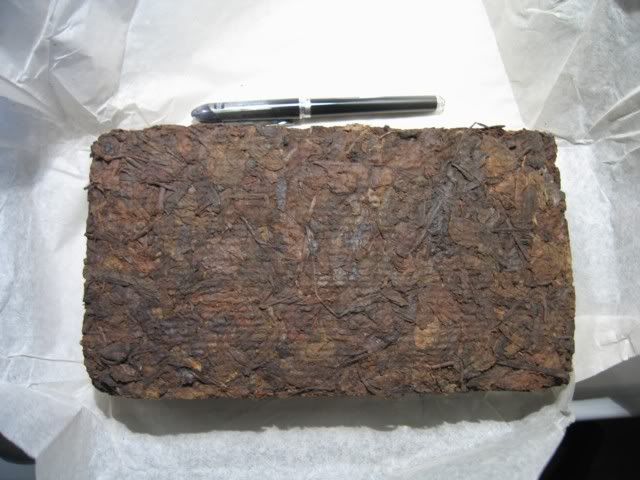It’s an interesting thing going to a store that focuses on its pots, rather than its tea. Yesterday there was a crowd of potheads gathered around the table with the owner sitting there, casually brewing some aged oolongs in a big well made pot that I’m sure is a few thousand dollars, at least. The discussion (to the extent that I could understand when they spoke in mandarin — most of the conversation was in Taiwanese, which is hopelessly difficult) was all about pots. Who made what, which one’s nice, if it’s a real one, how much, look at that nice clay, the good calligraphy, etc etc
Connoisseur pots are, of course, not quite the same as our everyday stuff. For one, they’re big, usually around 500cc, which is only really usable when you have a bunch of people. A 300cc one is already too small, and the stuff we usually use — around 100cc, is not for them at all (although some do like to play with a few of these as an aside). These people are often not too knowledgable about tea. One man thought the aged oolong we were drinking was a puerh at first (it should be immediately obvious). They tell me they just drink tea, but they really, really love their pots. They get custom made brocade boxes for them that are shaped just for the pot, so that it is safe. They take them out, carefully wipe them, put them back, take pictures…. you name it.
And they are expensive. The few nice ones that were being passed around yesterday were ten or twenty thousand USD, per pot. Even the “cheap” ones are a few thousand dollars. There are ones that are even nicer, but those, I gather, are rarely taken out for show. They hide them in the house.
One of the guys who were there, a man in his late 50s, I think, said he’s been collecting pots for a few decades now. I’m sure he’s got a nice collection, as you can tell everybody in the group respects him. He then tells me something which I find a bit startling — he can’t tell a fake from a real, at least for the “masters” pots which he generally collects. “Masters” (mingjia) pots are the ones that are made by living or recently dead pot masters, and are not usually antique. This stuff has a high rate of fakes, and when a guy who’s got a lot of experience playing with this stuff doesn’t know for sure if something is real or fake, there’s something wrong.
The owner of the store said that for them (the dealers) it is possible to get a sense of whether something is real or fake, but even they cannot be 100% sure and sometimes have to hunt down connections to find proof. They know, generally, because they’re the ones who sees the most out of anybody in the pot-food-chain. The makers don’t really know each other’s works. The buyer/collector only knows what they are told by the dealers. The dealers see both sides, and see each other too (as they trade stuff). So, a pot from Master X might have certain characteristics…. this they know.
But then, you have fakes. Fakes are really good these days. Fakes are also a parallel industry, apparently. Pot makers in Yixing have specialities — this guy specializes in fake antiques, that one fakes Master X’s pot really well, and this woman fakes Master Y’s to perfection. These people have good skills, obviously, and sometimes even better than the so called masters. But… they’re not famous. They can’t sell pots for thousands of dollars, not until they’re famous anyway, which is never a sure thing even if you have talent. If they fake somebody else’s though, they can.
So unless you have a dealer who you can absolutely trust and whose knowledge is impeccable… finding a real pot (antique OR masters) can be a real challenge, especially when starting out. The owner of the store says her customers don’t have to pay tuition, because all her stuff are real. While there’s always a bit of advertisment in these proclaimations, I do think the stuff I’ve seen there are better than most. Maybe I can learn a few things from these people…. from simple issues like how they season pots to clay quality to everything else. Here’s hoping, anyway. Meanwhile… I’ll just drink my tea using my inferior teapots.








Yeah whisky prices have been leaking too, as well as luxury watches. I wrote a post maybe a decade ago…